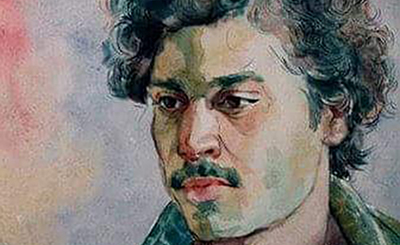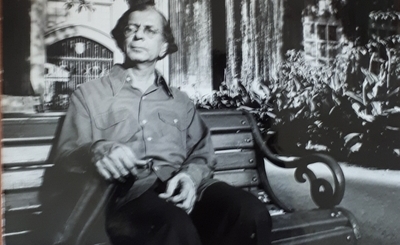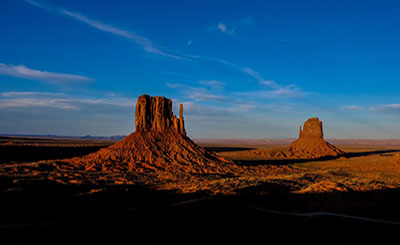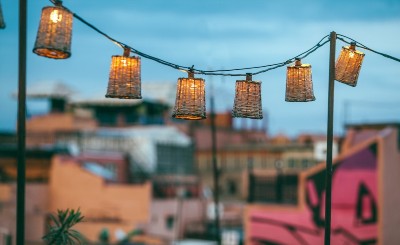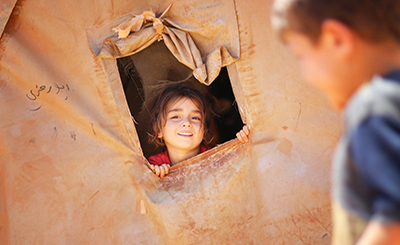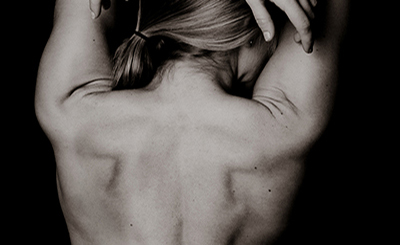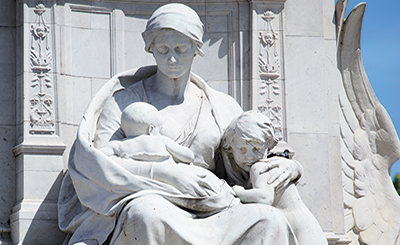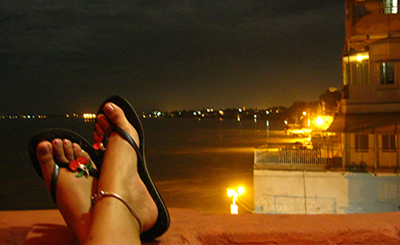
Photos courtesy of the author
This starts in Madikeri. Everything starts in Madikeri. Not just because that is where I learned to walk first, one fat foot before the other. I was a fat child. Chubby was the favoured word then though, of course. This begins in Madikeri because that is where everything that is me begins. Everything goes back to this little green dot, a speck pulsating unhurriedly on the map of coffee country.
Without a beginning somewhere, you couldn’t possibly have a continuous now or a continued measure of progression. If all this, the now, is that at all. So I believe. So we all need to believe. It is faith and belief and illusion and all that, like a conditioned belief in a deity that by any name you might wish to revere. We all need our illusions.
So this began during a summer in the 1990s, I want to say, when the shadows on the red oxide veranda fell long and slow in the afternoons. The idyllic went further, with mango trees at four arms’ length, two Kashmir trees — firs — that stood in front like intricately carved stone sculptures guarding the sanctum sanctorum in ancient worn out temples. Granny told stories, starting sometimes in the morning if I pestered and begged enough, and continuing, one after lunch, two before bed, like a dose of antibiotics that could make the summers bearable. Granny, an excellent storyteller to rival every writer in the world, died a few years later. I wonder what happens to the stories when the storyteller dies. With every passing summer, I began to favour the words sandwiched between pages that smelled musty or crisp, depending on how well and long they had been thumbed. Granny was aging, and her stories were not enough for someone who wanted more and more and more, greedy, hungry, obsessed with collecting stories.
And that is how and why I started walking.
Madikeri in the early 1990s was slow, quiet and beautiful, as most hill towns are. It is mostly all these things today too. Having worked my way through nearly all of the collection of hard bound Russian literature that grandpa had left me, and with no access to bookstores save for the one that sold the day’s newspapers, some stray magazines and crime pulp with garish covers, I wound up one summer at the district library. It was within a newer building in the fort complex, a plain box of a structure, not airy, not too well lit and immersed in the heady mix of smells of books very old/never used and books newer/much borrowed. I loved the fort that it faced though. And the roads that led up to this fort, its old chapel turned never-opened museum, the library, the government offices and hangers-on aplenty, all encompassed within a stone compound that I have only once ever circled, these roads were where I drew my first maps for.
The map has been in my head for years now. It began where the corner of my house ended. This house from 1962/63, named after how a bulb in the veranda looked like a star from the turn after the central post office in town, was in the outskirts, in a village before the town grew a fat belly and swallowed it in. From the edge of the garden, a narrow path led past the “line mane” — houses, a row of small houses, all without gaps, a style very typical of labour quarters in plantations that dotted my region densely. My nanny lived in one of these houses. Past this “line mane”, I would walk down to the fields that we once grew paddy in, till labour became sparse and buying rice became cheaper. I don’t remember those years when we grew paddy very well. But I can picturise fields green as bright emerald, with cranes and tittibaa, a close cousin of the crane I assume, decorating themselves like props here and there between the paddy stalks. I am not sure the imagery is from the fields that we could see from the house, but I do remember a time when it was green and not the colours of the rainbow that the houses built upon this farm land today are painted in.
Across the fields, left and then a right turn would be a road that was lined with state built police quarters on one side — white walls and brown roof tiles, standard, regulation, except for a pot on the window sill here, a bicycle leaning against the back door there, each distinguished only by the clothes hung out to dry, the only separating identity that hinted at who lived these otherwise uniformed lives. On the other side was my favourite view, that of Stone Hill — Stewart Hill officially — and the other nameless little hillocks that extended a little to the left and the right which my parents and I, on some evenings, drive up to to watch the city lights come on or the sun go down, leaving behind skies the colours of lapis and peacock plume and jewels upon a grand crown. Then past the remand home for juvenile wrongdoers with high gates that you could still see through of, an old friend’s house, another hillock I once played Seven Stones and Hopscotch on that had now been carved through to house big houses, past Fair Traders, one of the first departmental stores in town, run by people from the neighbouring state and a brief crossing over of a main road.
This map took me many trips to the library to draw, many trials, much unease as I grew older and the boys from out of town a little more boldly rowdish. I loved climbing, any steep roads, of which of course my hill town had plenty, was to be mandatorily added onto my map into town and back. Sometimes it would be raining, over the years, the monsoon holidays found me stubbornly going to return and borrow books, often by unheard-of writers that I never was inspired enough to remember, a Mills and Boon now and then, sneaked in, in between heavier tomes. Rains in town were nearly always drenched in mist as well, heavy, close enough to grab a fistful of, wispy enough to blow away when you wanted to see more than three feet ahead of you.
In the end purpose I always had for sauntering about town, I broke every rule of the act of a French idea I was to learn only many, many years later. The French word of flaneur is as lovely as any word from an unfamiliar language could sound. They once dedicated an entire genre of sophistication to flanerie, the act of being a flaneur. The derived meanings of the word lent more romanticism to the act of flanerie than the original descriptions in 19th century France when Paris and its mysterious streets almost seemed designed for the leisurely walkers. A flaneur was a stroller and when first conceived of, the idea usually meant a wealthy man — it was always a man — often an aristocrat who could afford to stroll around all day long, thanks to unearned income in his family name. The poet Baudelaire’s derived meaning is what we know the flaneur by. He described a flaneur as “a person who walks the city in order to experience it”.
From the time that my attempts at being a flaneur begin in the hills to now, to the maps I draw unintentionally every time I go to buy bread or the raw materials for a salad or curry or eggs for my dog or wine for late night or something else that running a house requires, I like to think I get to know this city I live in. In all its glorious filth, noise, loves and summer flowers, in what it is and what it means to be here. The city that shall probably never be mine in the manner that the hills are mine, for a decade of experiencing it has yet to make it the home that ten years of living out of the hills hasn’t made those hills not a home. Yet, the disdain I exhibit, the nonchalant rejection in words of what this city is, is perhaps the best homage I could possibly give it, for it is only with the most beloved that you can show such arrogance, safe in the knowledge that when you want to be unquestioningly accepted and loved back, it will always be around, patiently waiting for when you want to come to your senses. That is this city to me, and more, and that love letter to her is something I will write someday, perhaps when she no longer belongs to me. Not now.
Page
Donate Now
More from The Byword
Comments
*Comments will be moderated





